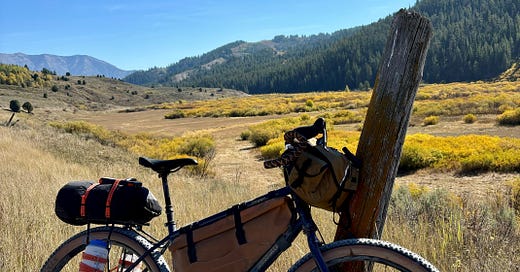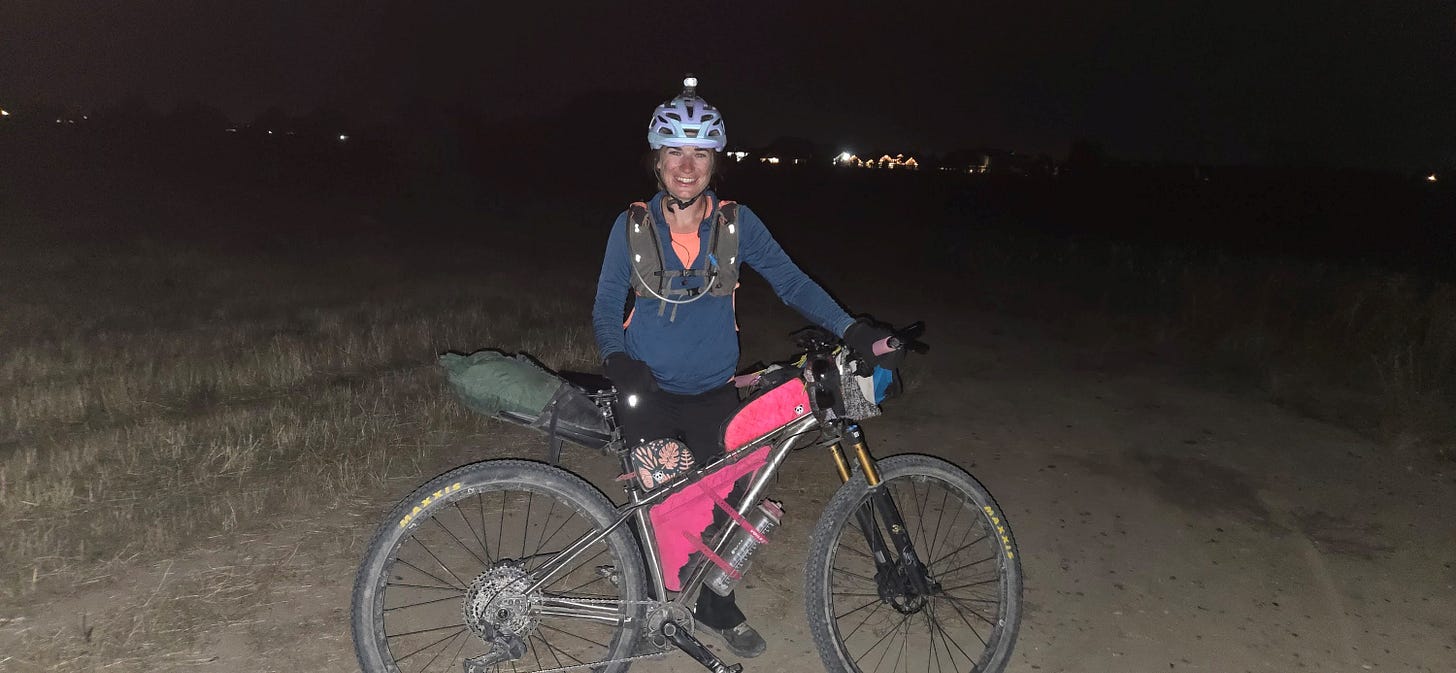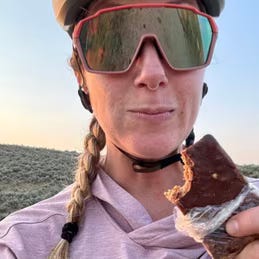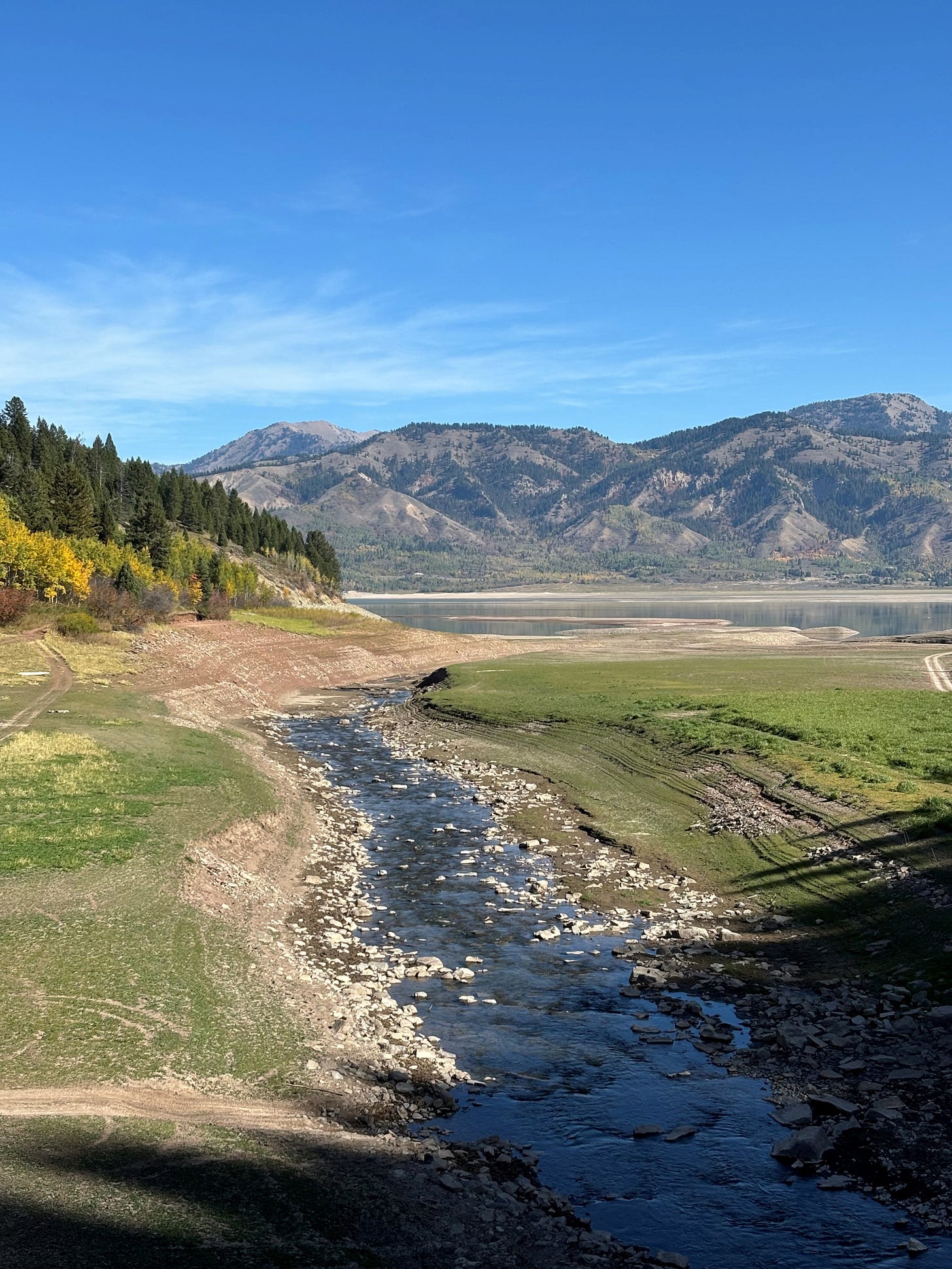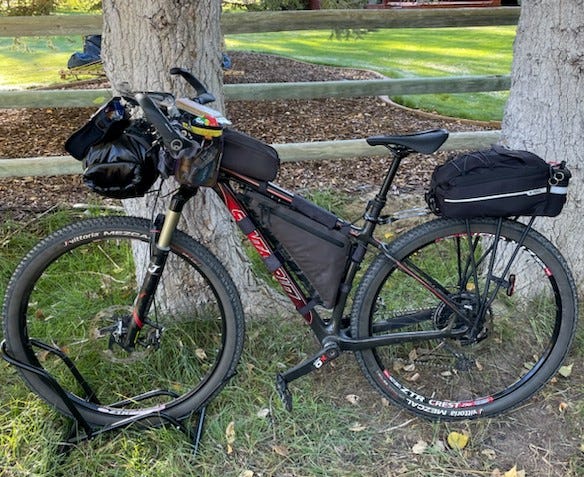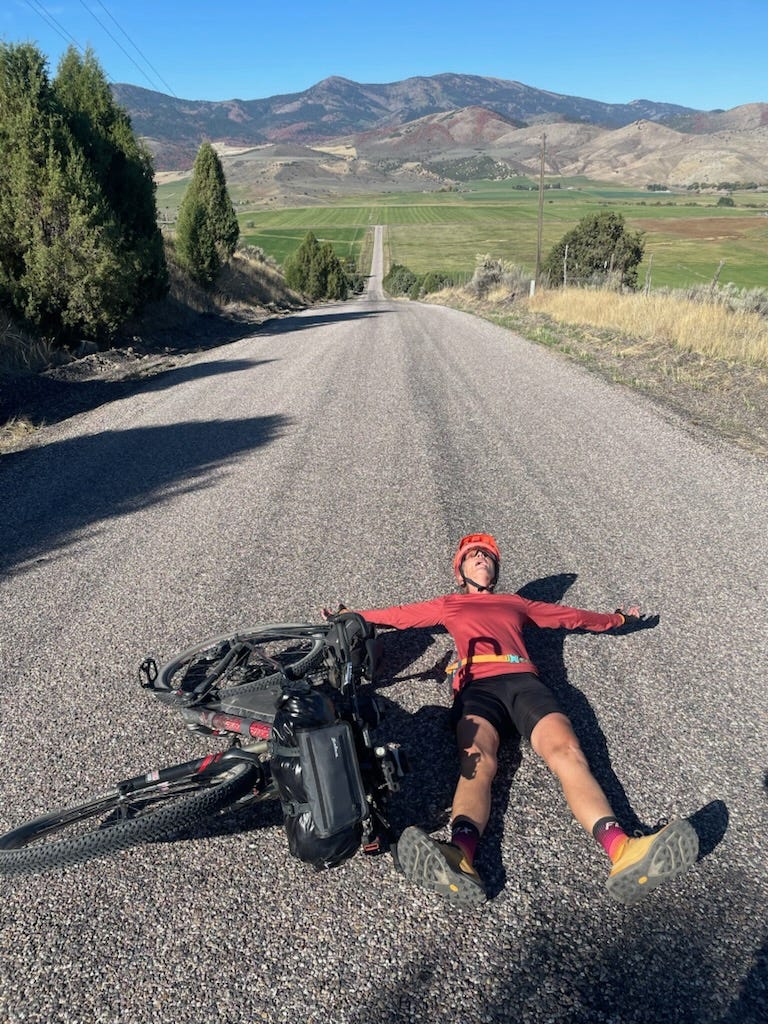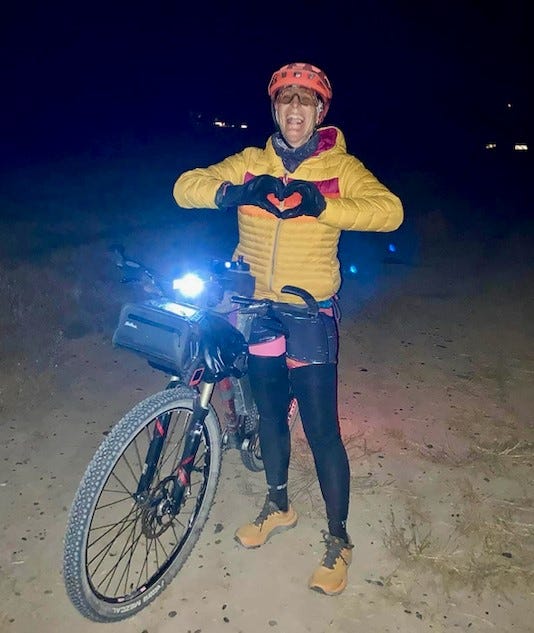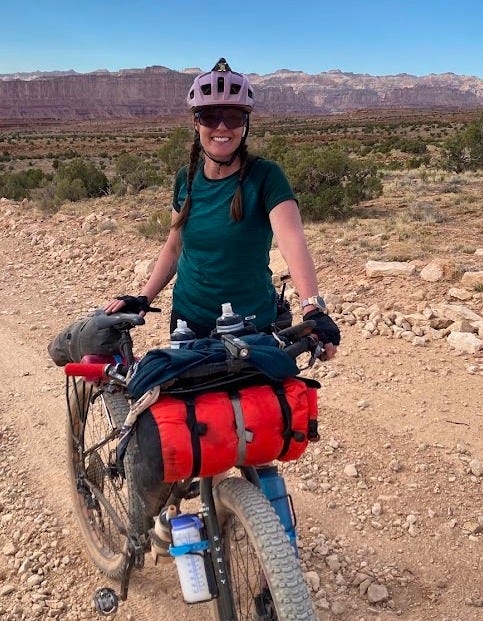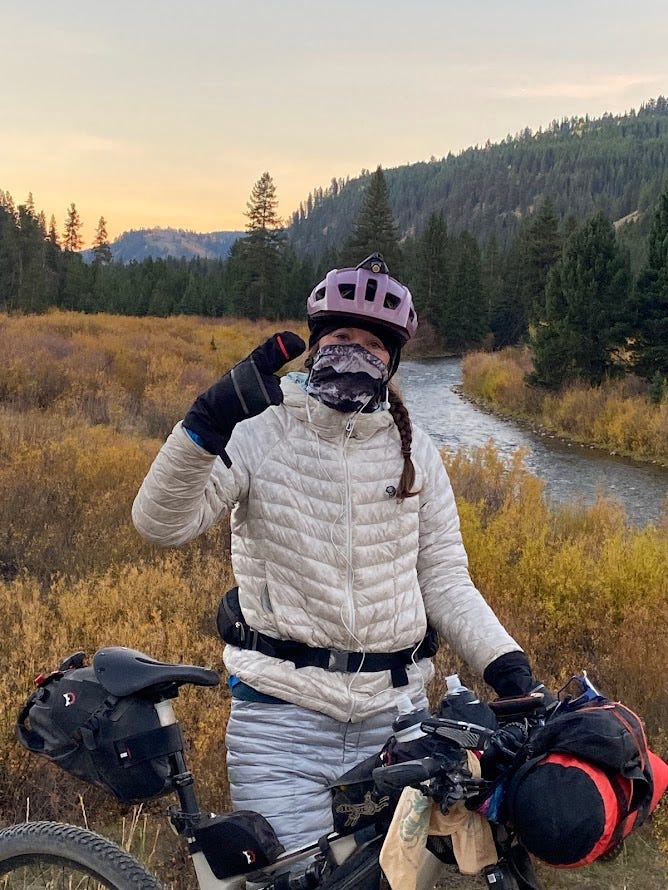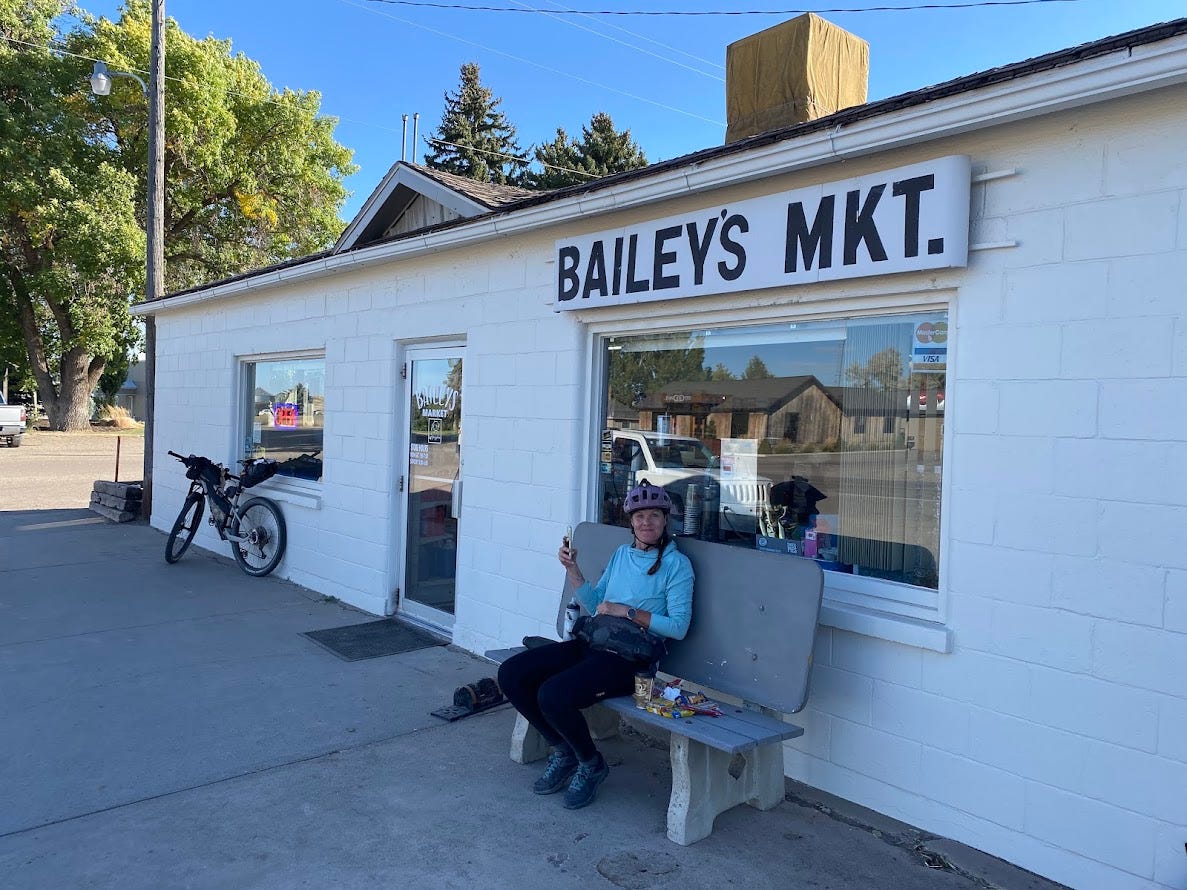Race Recap - East Idaho Epic 2024
Read about the experiences of four IWBP riders who competed in the inaugural East Idaho Epic 430 and East Idaho Endeavor 260.
The East Idaho Epic is a new 430 mile self-supported bikepacking race that is the successor to Fitzgerald’s Joyride (also previously know as the Pioneer 400). 2024 brought us a new race director, a later start date, and a different course that delves into the Caribou Mountain Range in western Wyoming.
There is also a shorter 260 mile option called the East Idaho Endeavor that omits the Wyoming stretch.
The inaugural event saw what we believe to be an unprecedented 50% female lineup! Women also accounted for the majority of finishers on the longer route (5 out of 9).
We asked a handful of these women to share their experience, highs and lows, and advice.
Cassidy Howard
From: Boise, ID
Age: 29
Route: Epic 430
Bike: Revel 29 El Jefe
What bikepacking or self-supported racing experience did you have coming into this event?
This was my fifth bikepacking race (Smoke ‘n’ Fire 2x, Pinyons and Pines, The Big Lonely). I was pretty burned out after doing all those last year, so this was my only race this year and I went into it with the goal of having fun.
What bike and setup did you chose and why?
Revel El Jefe. I got this bike a year ago specifically for bikepacking on mixed terrain. I have taken it a few times this year on fun trips and XC races, but this was my first bikepacking race. I love this bike and would recommend it to anyone looking for a bikepacking bike that is also extremely capable as an XC mountain bike!
Modifications I made for this event: 2.2" Ikon tires, adding bar ends for additional grips, and adding a riser bar with aero bars.
What bike or setup choices would you do differently in retrospect?
I would not use aero bars again. It was my first time trying them and I didn't use them enough. When I got into the aero position, it wasn't comfortable because it put extra pressure on my saddle sores. I do recommend the bar ends for extra hand positions.
What gear choices worked well for you?
I went ultralight on my sleep kit - Klymit Inertia X-Frame Pad (look it up — its barely a sleeping pad), Enlightened Equipment 20-degree quilt, and an ultralight tarp. I found myself sleeping on top of my bivvy instead of getting in it to avoid condensation in the past, so I decided to simplify and just do a tarp for this race — which could double as rain protection in a pinch (it wasn't in the forecast). I slept outside only twice — the first time in 35 degrees on dirt where I was warm enough. The second time — in 23 degrees on concrete in a pit toilet — I was pretty chilly. I think I found the limits of this ultralight setup and would probably bring a warmer pad if the temperature is going to be that cold again.
What gear choices would you do differently in retrospect?
I had a really hard time eating on this ride. Most resupply points were 80-100 miles apart, which meant I was only hitting resupply once a day. I had a hard time eating any meals outside of these resupplies. If I were to do this again, I would bring a stove and make some backpacking meals. A warm meal before bed in 23 degree weather would've helped me sleep better and ride better the next day. I have never brought a stove on a bikepacking race but I would recommend for this route — unlike on something like Smoke ‘n’ Fire where there are twice as many resupply stops.
Tell us about your high points. What did they meant to you?
My Day 3 was stellar. I had a great lunch at Maverick and a short rest in Afton around noon and then spent the afternoon tackling a 40-mile climb. It was a gradual climb — wooded, with beautiful fall colors, perfect temperature, constantly following creeks — the climb went by fast. I was happy to be right where I was. These are the moments I crave when I go out for these bikepacking races. I had a rough Day 2, and the highs always feel higher after getting through a low.
What were your low points? What did you do to get through them?
As mentioned above, Day 2 was rough! There was an 8-mile, 3000+ ft climb, and although it was pretty, it was also hot with no water. After getting to Soda Springs and replenishing calories, I continued to feel bad as I developed a stomach ache after drinking an A&W Root Beer float. I know better than to have large amounts of dairy on these races! Additionally, I started to develop a mental hole because I was falling far behind my time goal. I was worried that I wouldn't make my 4 day time goal. At the end of the day, I camped near the split between the 260 and 430 mile course. Laying in my bed, I reflected on the rough day and decided I would switch to the 260 mile course in the morning! But I decided to sleep on it, and after resting, I felt so much better and didn't even consider the short course.
What advice would you offer women considering a self-supported bikepacking race?
I always think of the term "race" loosely — don't focus on others. Ride your own pace and find what works for you in terms of pacing, sleep, and how long to stop. It's a balance between taking care of yourself and being efficient, and everyone has a different take on this balance. I decided to sleep 5 hours instead of 4 (what I have done in the past), because I wanted to prioritize having a good time and not getting too far into sleep deprivation. I think this made me ride stronger — plus I didn't feel the urge to stop and nap as often in those early morning hours. By being consistent in my pacing and sleeping, I was able to have a good result that I am happy with!
Jennifer Lucey
From: Boise, ID
Age: 39
Route: Epic 430
Bike: Tumbleweed Stargazer
What bikepacking or self-supported racing experience did you have coming into this event?
This was my second race — the first was Hot Taco in August this year. I started bikepacking in late 2022 after years of biking and backpacking.
What bike or setup did you chose and why?
I rode my Tumbleweed Stargazer. It's a rigid drop bar mountain bike. It has 2.4 inch tires and a Tumbleweed rack on the back. It has a Rockgeist frame bag and Swift top load handlebar bag. I strapped a dry bag to the rack and had 2 bottle cages on the rack for those long stretches without water.
This bike is my all around bikepacking bike — after hearing that the last part of the course would be fine with a gravel bike I considered riding my gravel bike, but I'm super glad I stayed with this. The course up to Soda Springs had quite a bit of chunky, loose stuff, so I was glad to have a heavier duty tire and bike.
What bike and setup choices would you do differently in retrospect?
I could probably have gone with 2.2 or 2.3 tires and been totally fine.
What gear choices worked well for you?
My sleep setup worked out perfectly with my 10 degree quilt — I'm glad I had it because a couple of those nights were pretty chilly.
What gear choices would you do differently in retrospect?
I packed a small stove, which I only used once on the first night. The rest of the trip I dragged around my oatmeal/nuts/coffee/cup and stove as extra weight. When I woke up in the mornings I just wanted to warm up by getting back on the road and didn't want to unpack/pack all of that stuff and waste precious time.
Tell us about your high points. What did they meant to you?
One high point was getting a second wind late on my second day of riding close to midnight and making the choice to ride on another 25 miles until 3 am. It was so cool riding at night hearing the elk and coyotes. The stars were absolutely amazing. A very cool experience.
My second high point was the 25-ish mile stretch in the Caribou National Forest we got to ride after that chilly morning ride to Alpine. It was so sunny and pretty, perfect temp, gorgeous scenery, and not a soul on the roads. It felt like it was only mine.
What were your low points? What did you do to get through them?
The lowest point was the last morning waking up in freezing temps to a frozen rear brake and frozen water bottles. It was soooo cold finishing the descent into Alpine and even after the sun came up it didn't actually hit my body to warm me up until I was almost in Alpine. Once there, I stood in the sun for a very long time shivering, trying to warm up. I was shaking pretty bad and could barely get my coffee to my mouth to drink it. Eventually I warmed up and continued on.
What advice would you offer women considering a self-supported bikepacking race?
Take meticulous care of your saddle area.
I had a Plan A, Plan B, and Plan C ready to go in advance. If you have backup plans ready you just have to execute them when it is time instead of wasting time coming up with another plan.
Practice riding at night and know how long your lights will last. And how many charges of your gear you can get from your power bank before it needs to be recharged.
Keep moving forward — you can do it.
Jennifer Biondi
From: Boise, ID
Age: 59
Route: Endeavor 260
Bike: 2012 Santa Cruz Highball
What bikepacking or self-supported racing experience did you have coming into this event?
My first self-supported bikepacking race was Hot Taco earlier this year — a 200-mile, Women’s only race, featuring 20,000 ft of vertical climbing with some extra sauce of triple digit heat.
What bike and setup did you chose and why?
I road my 2012 Santa Cruz Highball that I converted from a 10-speed to 12-speed. My bike has a front shock and dropper, but I never used the latter as my rear rack bag interfered with it. Prior to the race, I purchased Vittoria Mezcal tires (29x2.25) which made for smooth climbing and enough traction for fast descents. I used a Salsa EXP Anything Cradle, Salsa frame bag, Blackburn rear rack with a B-Soul cargo bag, and I brought 2 extra Voile straps to strap down food or for cinching down gear between stops. I also used two feed bags, a top tube bag, and had a handle bar extender to hold my iPhone, lights and Wahoo.
What bike or setup choices would you do differently in retrospect?
I honestly liked my overall setup. The only thing I would change is a different frame bag. I found the zippers were very hard to open and the material didn’t provide much give. When your hands are tired, something as simple as unzipping a compartment can really be a struggle.
What gear choices worked well for you?
I used a Talenti ice cream container to store food and to prepare cold soak meals. I was happy to have my cycling leg warmers for morning and evening riding. My puffy jacket along with winter riding gloves, beanie, and buff definitely kept me comfortable at night when temps dropped drastically.
For hygiene, I used witch hazel wipes and a fast drying face cloth that I could attach to my bike for quick drying. I’m a bit of a clean freak, so cleaning up and putting on a clean wool long sleeve shirt and wool boxers for sleep helped me unwind. I also packed an extra pair of biking shorts and socks that I rotated each day. The old adage “dress for success” comes to mind.
What gear choices would you do differently in retrospect?
I would definitely make sure my iPhone held a charge and my backup battery bank was sufficient. Most importantly, know how your navigation device works. I ended up staying in hotels both nights to be able to charge my devices. In retrospect, I could have eliminated my bivy, sleeping pad, ground cover, pillow, quilt, leggings, wool shirt, rear cargo rack, and rear cargo bag-- reducing my load 7-8lbs. This would be a disastrous choice if a had a mechanical or wanted to ride longer in the night. I would keep all the gear I packed for my own peace of mind.
Tell us about your high points. What did they meant to you?
High point one was making it all the way to Lava Hot Springs at the end of Day 1. My second high point was seeing the glow of city lights after riding solo for hours in the dark on an unfamiliar road and being spooked by random trucks and cows standing in the middle of the road. Seeing those lights gave me a boost and confidence that I was getting closer to the finish.
What were your low points? What did you do to get through them?
I reached a low point on the morning of Day 3. I overslept, failed to charge my inReach (major oversight), and couldn’t launch the route on my Wahoo. All-in-all, it was a 4-hour departure delay and it nearly wrecked me, but once I got moving, I turned my focus on the scenery and chipping away at mile markers.
What advice would you offer women considering a self-supported bikepacking race?
My advice is to be prepared to spend lots of time on your own — you, your bike, and beautiful scenery. Additionally, when you do a self-supported race, just know you will receive lots of encouragement, even from people you don't know that are watching your “DOT”. People don’t care if you finish first, last, or scratch. I’ve never experienced a sport quite like it. You show up, and love and support follows you!
Laura Heiner
From: Boise, ID
Age: 48
Route: Epic 430
Bike: Canyon Lux Trail
What bikepacking or self-supported racing experience did you have coming into this event?
I have been bikepacking for about eight years and have participated in some self-supported events. I’ve done a lot of riding in general: road, trails and bikepacking.
What bike and setup did you chose and why?
I chose a full-suspension, carbon frame bike. My Canyon Lux Trail. I like a light set up for racing. With my full suspension its hard to overload my bike, so it forces me to pack lighter. It’s also nice to have the option to use my dropper post, even though in this race it wasn’t much needed. I also like the flexibility of having a quick lockout for my suspension. I ride mostly locked, using that to go faster on the smoother gravel sections, but utilizing the suspension for comfort and control when needed.
What bike or setup choices would you do differently in retrospect?
I would have different bars. My current bars are a very wide, more aggressive MTB style and while they are great for trails, my upper body and hands really take a beating when I’m riding 18+ hours on a ride like this. I’m heavy on my hands and pitched a little too far forward. I’m definitely swapping them out for something with a small rise and a subtle backsweep. I had my eye on the the Tumbleweed Persuader bars all year and didn’t bother to swap them out. Totally regretted it. This change would be solely for comfort reasons and would have made a huge difference.
What gear choices worked well for you?
I chose a larger seat pack to bring more cold weather clothes. Cold is my nemesis, so having more options on layering is important for me. This was my first time using down pants. Literally, life changing. I also bought new cold weather tights that helped a lot.
I really do love my faithful Garmin eTrex. It’s so reliable and easy to use. I trust it. I never even had to swap out batteries.
I know this is a small change, but I added a Jerrycan rear top tube bag for the first time and this was actually so nice! It was dedicated to my spare tube, spare voile and water filter. I love having dedicated spots for the things I need to have. This freed up space for my snacks in my other top tube bag and I know that doesn’t sound like much, but it was a nice alteration to my usual setup.
This is also small and niche, but foldable reading glasses in a hard case.
What gear choices would you do differently in retrospect?
I wish I had a few more warmer clothing options for descending and sleeping. Most of the ride this wasn’t an issue, but I was descending Grey’s River in the nighttime and early morning hours. The cold was almost unbearable. I really wish I would have packed my down booties for sleeping and better gloves for descending, even though I thought the ones I had were going to be sufficient. The worst point for me was descending in the dark and my toes turning into stabbing needles. I had two pairs of wool socks and bags on my feet, but that wasn’t enough. I had to stop riding for the night because I couldn’t tolerate the pain any longer. I would also pack my warmer neck gaiter.
I never race with a stove, but it would have made a world of difference through the Wyoming section to go to bed and wake with a hot drink. I’m still contemplating how nice that would have been. In any colder temps, it could possibly be crucial.
I also rode across the finish line with all lights on red after carefully conserving them all night. All my cache battery power was gone. I should have stopped longer in Alpine to charge up before taking off. I’m lucky to have made it in that night.
Tell us about your high points. What did they meant to you?
I had the best night’s sleep for 4 hours in Lava Hot Springs at a funky hotel, and I love odd moments like that where you question, “what is my life right now?!” I adored meeting the owners of Baileys Market in Niter. I love small towns, so that was a highlight. I really enjoy the solitude and riding alone. If I had ridden the Caribou Loop section, especially Grey’s River during warmer temps, that would have been my high. This section was amazing, but I was way too cold. It was still stunning.
My true high was the Big Horse Butte section at the end of the 4th day. The day I wasn’t feeling good all morning. Go figure. That’s how highs are. They will surprise you and you just enjoy them when they do. It was nearing sunset and I was feeling good. Rollers that could have made me mad so near the finish, were enjoyable and easy and I was just soaking in the sky and cruising along unfazed. Bonus high: after telling Cody to leave me behind earlier that day, I came around a bend in the road to find him standing by a fence, layering up:) Just in time to ride the last few miles together.
What were your low points? What did you do to get through them?
I actually had the most lows on this ride than any before. I wasn’t trained as well as I should be physically and it caught up to me day 4. Mid-morning this day, I couldn’t hold Cody’s pace and I was irritated at everything. I asked him to just leave me and ride on ahead at his pace. He quickly disappeared over the hills. I just had to slow my pace and put on my best music.
Audio books and podcasts are fine, but sometimes you just need a beat to keep you going. I also chose to bring an audio book where the main character is in severe physical pain the whole time. Bad idea. Not distracting for the mind at all. Seriously, choose happy things to listen to. And, for lows, I’ve learned sometimes you just need to walk or stop for a few minutes or eat. Try all three and see if it helps.
What advice would you offer women considering a self-supported bikepacking race?
Be brave. You’re stronger than you think you are. The more you do it, the easier it becomes. You’ll find sleeping alone isn’t really that scary after all. You get really used to the solitude and night riding becomes normal. Women’s bodies are built for endurance and bikepacking is endurance. This is for you!
I always say, Plan Don’t Panic. Know the route and have backup navigation. Keep notes on how to do things in your phone. Practice your mechanics. Pack smart. 90% of the time, everything goes just fine and all you need is the mental game to just keep on pedaling. So, work on your mental stamina just as much as you work on your physical.
If you dare show up at a starting line, just pedal like you would any other day of the week when they say go. That first day is for getting into your groove. The rest is just rinse and repeat. You’ve got this.

